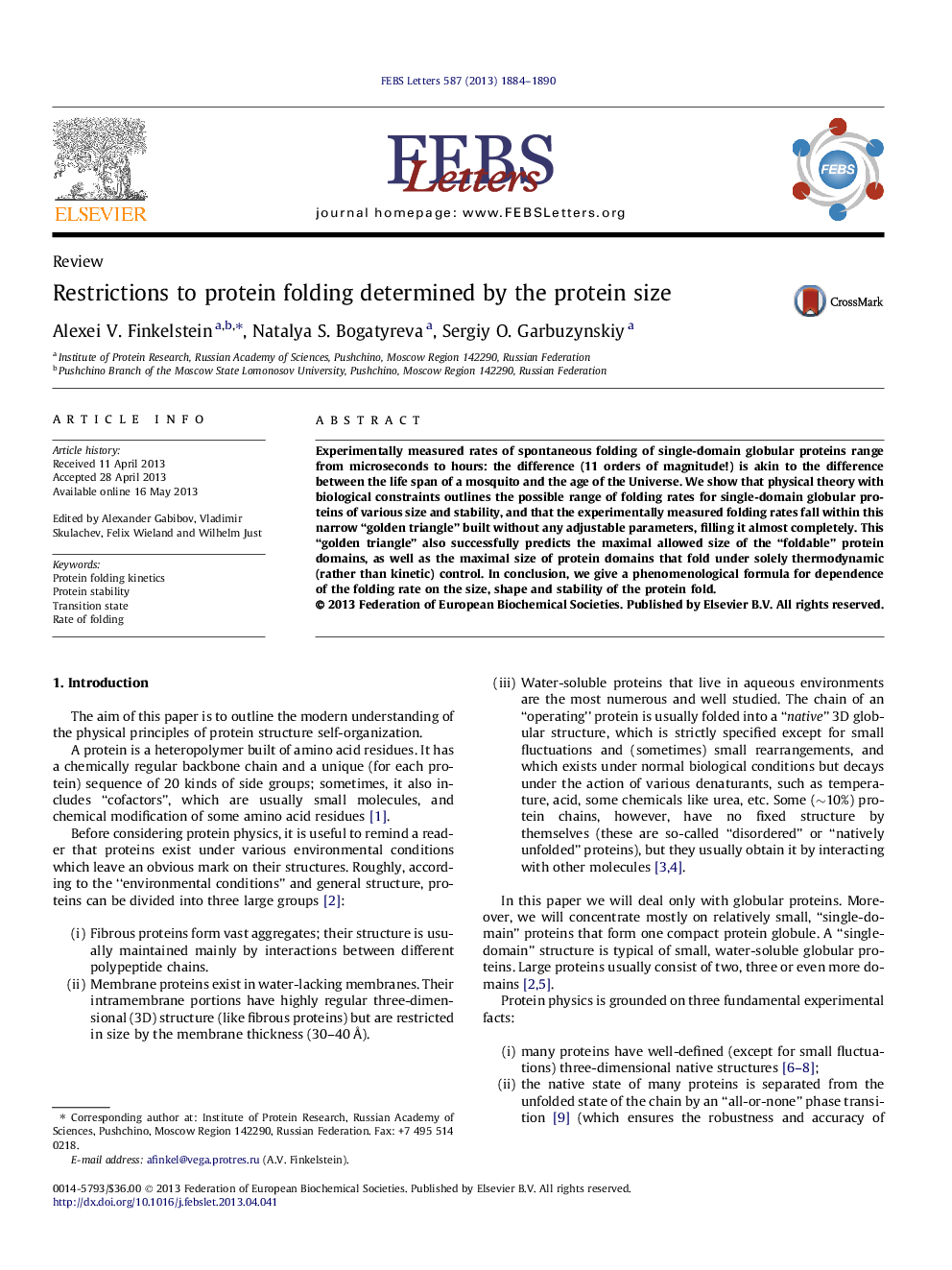| Article ID | Journal | Published Year | Pages | File Type |
|---|---|---|---|---|
| 10871335 | FEBS Letters | 2013 | 7 Pages |
Abstract
Experimentally measured rates of spontaneous folding of single-domain globular proteins range from microseconds to hours: the difference (11 orders of magnitude!) is akin to the difference between the life span of a mosquito and the age of the Universe. We show that physical theory with biological constraints outlines the possible range of folding rates for single-domain globular proteins of various size and stability, and that the experimentally measured folding rates fall within this narrow “golden triangle” built without any adjustable parameters, filling it almost completely. This “golden triangle” also successfully predicts the maximal allowed size of the “foldable” protein domains, as well as the maximal size of protein domains that fold under solely thermodynamic (rather than kinetic) control. In conclusion, we give a phenomenological formula for dependence of the folding rate on the size, shape and stability of the protein fold.
Related Topics
Life Sciences
Agricultural and Biological Sciences
Plant Science
Authors
Alexei V. Finkelstein, Natalya S. Bogatyreva, Sergiy O. Garbuzynskiy,
